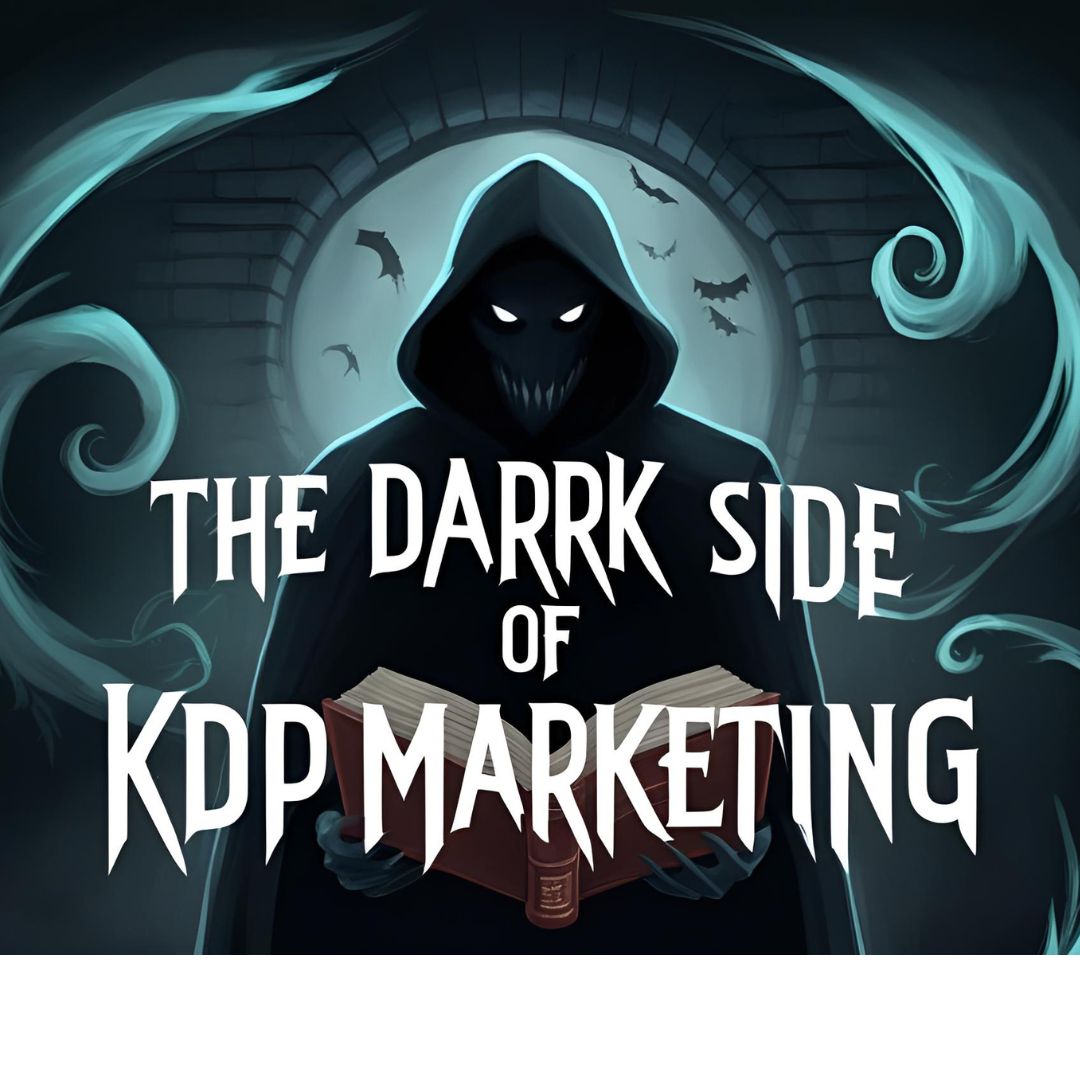Introduction
In recent years, a unique genre of publishing has emerged, capturing the attention of both creators and consumers alike: low-content books. These publications, which may include journals, planners, coloring books, and workbooks, emphasize minimal textual content while offering practical uses for readers. Unlike traditional literature, low-content books often prioritize interactive elements and user engagement, leading to their rising popularity in various markets.
Despite their increasing acceptance, low-content books have faced their share of skepticism. Some traditional authors and readers regard them as inferior, challenging the notion that a book must contain extensive narrative or complex ideas to be deemed valuable. This misconception often stems from an entrenched belief that literary success is synonymous with lengthy prose and deep intellectual content. However, this perspective overlooks the diverse needs and preferences of today’s readers, who seek more flexible and functional formats that accommodate their lifestyles.
This blog post aims to debunk common myths surrounding low-content books and provide insights into how they can be successfully created and marketed. It will explore the strategies used by successful authors who have navigated the challenges posed by skepticism, ultimately transforming their low-content creations into bestseller phenomena. Readers will learn about effective design techniques, marketing tactics, and the importance of understanding target audiences. By addressing these key areas, we intend to illuminate the potential of low-content books, demonstrating that they can not only satisfy consumer demand but also achieve remarkable success in the competitive world of publishing.
Understanding Low-Content Books
Low-content books are a unique genre of publishing that focuses on minimal text and relies heavily on user interaction or creativity. These publications typically require little written content, making them significantly different from traditional, content-rich books. They often include formats such as journals, planners, coloring books, sketchbooks, workbooks, and activity books, which invite readers to fill in pages or engage with the material in a personal or creative way.
One of the defining characteristics of low-content books is their blank or semi-structured layout. For example, a journal may consist of empty pages with occasional prompts to inspire writing, while a planner might feature dated pages with spaces allocated for appointments or notes. This simplicity encourages users to personalize their experience, fostering a sense of ownership and engagement that may not be prevalent in traditional books.
The rise of low-content books represents a significant shift in the publishing industry, offering a viable option for authors who may not have extensive writing experience or the desire to pen lengthy narratives. The production costs of these books are relatively low, appealing to aspiring authors looking to monetize their creative ideas without substantial investment in content generation. Additionally, the market for low-content books has expanded, appealing to a broad audience segment, including students, professionals, hobbyists, and mindfulness practitioners.
Ultimately, this genre is particularly attractive in an era where consumers are increasingly seeking customizable products that cater to their individual needs and interests. The interactive nature of low-content books allows for a diverse audience to engage, making them not only a popular choice for self-publishing but also a powerful tool for personal expression and organization.
Market Research Insights
The landscape of publishing, particularly with respect to low-content books, has been evolving dramatically over the last few years. Research indicates a significant growth in the market demand for low-content books, which include items such as journals, planners, workbooks, and coloring books. According to a report from Market Research Future, the global market for journals and planners is projected to experience a compound annual growth rate (CAGR) of approximately 5.1% from 2021 to 2026. This trend underscores the increasing acceptance and popularity of low-content books among consumers.
Platforms like Amazon have played a pivotal role in amplifying this trend. A survey conducted by the self-publishing platform KDP revealed that low-content books comprised around 25% of total book sales within the broader self-publishing genre. The convenience of print-on-demand services and the direct reach to a global audience via online marketplaces have driven numerous authors to explore low-content publishing. These factors have created a lucrative avenue for both seasoned writers and newcomers to monetize their creative endeavors.
Demographically, the target audience for low-content books tends to be diverse, spanning various age groups and interests. The primary consumers include students, professionals seeking organizational tools, and individuals with artistic inclinations. Notably, millennials and Gen Z users are particularly drawn to customizable planners and journals, seeking ways to personalize their daily routines effectively. This generational preference highlights the importance of user-centric design and functionality in the creation of low-content books.
Better understanding the target audience’s preferences through market research not only aids in the creation of appealing products but also enhances marketing strategies. Authors and publishers who effectively assess the demographic landscape are more likely to produce low-content books that resonate with their intended readers, thus increasing their chances of achieving bestseller status.
Success Stories from Low-Content Authors
In recent years, an increasing number of authors have taken the plunge into the world of low-content books, often facing skepticism along the way. However, numerous success stories illustrate that these seemingly simplistic works can achieve remarkable success, capturing the attention of readers and climbing bestseller lists. One notable author, Sarah Johnson, created a guided journal that encourages mindfulness and self-reflection. By initially focusing on quality content and a captivating design, she marketed her journal through social media platforms, attracting a dedicated following. Her innovative approach combined with targeted advertising allowed her to reach a wider audience, ultimately resulting in her book achieving bestseller status.
Similarly, David Lee, a self-published author, tapped into the niche of motivational planners. After conducting thorough market research to understand potential buyers’ needs, he crafted a planner that not only meets those needs but offers unique features such as customizable layouts and inspirational quotes. By leveraging both organic outreach through content marketing and paid promotions, David successfully propelled his planner onto multiple bestseller lists, demonstrating the power of effective marketing strategies in the low-content book space.
Another inspiring case is that of Laura Chen, who successfully created a series of low-content activity books for children. Her strategy involved collaboration with educational professionals to ensure her content was not only entertaining but also beneficial for early childhood development. Through partnerships with schools and educational influencers, she was able to build credibility and visibility for her books. The brilliance of Laura’s approach illustrates that catering to a specific audience while ensuring educational value can lead to unprecedented success in the low-content realm.
These authors and many others showcase the viability of low-content books in today’s market. They reveal that with the right mix of creativity, understanding of the target audience, and effective marketing techniques, success is not only attainable but can also be extraordinarily impactful. Such stories serve as a source of inspiration for aspiring authors entering the low-content book niche, proving that one can triumph against skepticism through determination and innovative strategies.
Creating Your Low-Content Book
Developing a low-content book requires a systematic approach that ensures creativity combined with functionality. The initial step in this process is brainstorming ideas that resonate with your target audience. Consider niches that appeal to specific groups, such as planners, journals, or activity books. Look for trends and explore gaps in the market, ensuring that your offering is unique yet meets existing demands.
Once you have your ideas, the next phase involves designing layouts. Low-content books often feature simple yet engaging designs where less is more. Utilize software tools like Canva or Adobe InDesign to create visually appealing pages that enhance usability. Incorporate elements like headers, page numbers, and themed graphics to offer a polished look. It’s crucial that the layout aligns with the book’s purpose and enhances the overall user experience.
The cover design is equally significant. It acts as the first point of engagement for potential buyers. Invest time in creating a compelling cover using graphic design software or hiring a freelance designer from platforms like Fiverr or 99designs. A professionally designed cover can convey quality, attracting more readers to your low-content book.
Once your content and design are finalized, it’s essential to explore self-publishing options. Platforms such as Amazon Kindle Direct Publishing (KDP) and IngramSpark allow authors to publish their work seamlessly. These platforms provide tools to help you format your book correctly and broaden distribution channels, which is critical for reaching a wider audience.
Finally, equip yourself with practical tips and tools throughout this journey. Online communities and forums can offer invaluable support as you navigate the nuances of low-content book creation. Engaging with other authors can provide inspiration, advice, and valuable feedback on your project, ultimately leading to a successful publishing experience.
Effective Marketing Strategies
Successfully marketing a low-content book requires a strategic approach tailored to its unique characteristics. The first and foremost step is to optimize the book for search engines. Employing SEO best practices can significantly enhance visibility. Focus on keyword research to identify relevant terms potential readers might search for. Integrating these keywords naturally into the book’s title, description, and even within the content is crucial. This not only aids in ranking higher in search results but also attracts a targeted audience.
Social media platforms serve as powerful tools for promoting low-content books. Start by creating dedicated profiles on networks such as Instagram, Facebook, and Pinterest, where visual content thrives. Share engaging posts that showcase the book’s features, including images of its interior pages or its applications in daily life. Utilizing hashtags related to low-content books can help tap into relevant communities. Engaging with readers through regular updates, contests, or polls encourages interaction and builds a loyal following.
Email marketing also presents a crucial avenue for reaching potential readers. Building an email list through a newsletter can keep followers informed about book launches, special promotions, or useful tips related to the book’s theme. Offering a free sample or a companion guide can incentivize sign-ups and provide immediate value to new subscribers. Regular communication allows for sustained engagement, encouraging previous customers to make repeat purchases and share with others.
Collaborating with influencers can amplify exposure significantly. Identifying influencers within the niche of low-content books or stationery can lead to mutually beneficial partnerships. Offering influencers a free copy in exchange for an honest review or promotion can provide access to their audiences and increase credibility. This multifaceted approach to marketing—combining SEO, social media, email outreach, and influencer partnerships—holds the potential to dramatically boost the visibility and sales of low-content books.
SEO Optimization for Your Low-Content Book
Creating a successful low-content book involves not only creativity and design but also a strategic approach to Search Engine Optimization (SEO). Incorporating SEO best practices increases the discoverability of your book, allowing it to reach a broader audience. The primary focus keywords associated with your low-content book should be carefully selected to reflect the themes and purposes of your work. Additionally, utilizing Latent Semantic Indexing (LSI) keywords can further enhance your content’s relevance in search results.
One of the initial steps in SEO optimization is to craft an engaging title that includes your primary keywords. This not only informs potential readers about the content but also significantly influences search rankings. It is advisable to keep titles clear yet descriptive to better capture the interest of your target audience. Furthermore, the meta description should provide a concise summary of your book while integrating relevant keywords. This can attract clicks from search engine results pages (SERPs) and entice more readers to explore your work.
Readability plays a critical role in SEO effectiveness. Short paragraphs facilitate easier reading and understanding, which can positively impact user engagement rates. It’s important to break up large blocks of text, and consider incorporating bullet points or numbered lists where appropriate, enhancing the overall structure of your content. These strategies not only make the material more visually appealing but can also improve the flow of information, making it more digestible for readers.
In addition, employing a logical hierarchy in your book’s structure with subheadings can help guide readers through the material. SEO-friendly formatting enhances not only the user experience but also the likelihood of your book being indexed favorably by search engines. By focusing on these SEO optimization strategies, authors can elevate their low-content books’ visibility and potentially secure a place on the bestseller list.
Engaging Your Audience
Engaging readers after the publication of a low-content book is crucial for building a lasting relationship that extends beyond the initial sale. The unique nature of low-content books, which often include journals, planners, or activity books, encourages interactive use from readers. Creating discussions around your book can amplify its visibility and encourage readers to share their experiences. A simple way to start these conversations is by asking thought-provoking questions related to the themes or prompts in your book. This tactic not only cultivates engagement but also prompts valuable feedback that can inform future projects.
Encouraging reader feedback is another essential strategy. Providing an easy and accessible way for readers to express their thoughts—whether it’s through an online survey, a dedicated email, or feedback forms—demonstrates that you value their opinions. This can lead to meaningful insights that enhance future editions or inspire your next low-content book. Collaborating with your audience in this way fosters a sense of ownership and connection, which can be beneficial for customer loyalty and retention.
Utilizing social media platforms effectively can enhance community building around your low-content book. Creating dedicated pages or groups allows your readers to engage not only with you as an author but also with each other. Sharing visual content, such as images of completed pages or customer testimonials, can inspire others to participate and share their own experiences. Hosting interactive sessions like live Q&As or challenges related to your book can also generate excitement and increase your reach. By strategically engaging your audience, you create a thriving community that not only supports your current project but also primes the market for your future low-content releases.
Conclusion and Call to Action
In examining the remarkable journey of low-content books, it becomes clear that these unique publications possess considerable potential for success in the competitive landscape of self-publishing. Despite initial skepticism, many authors have turned their low-content creations—such as journals, planners, and coloring books—into bestselling products that resonate with audiences. This shift illustrates that the market is ripe for innovative ideas and comprehensive strategies tailored to diverse reader preferences.
Throughout this discussion, we have highlighted the essential attributes that contribute to the success of low-content books. By focusing on niche markets, understanding target audiences, and employing effective marketing tactics, aspiring authors can navigate the landscape with confidence. The flexibility offered by low-content books allows creators to explore a variety of themes and subjects, empowering them to establish a distinctive voice in an ever-evolving industry.
For those inspired to embark on their own low-content book publishing journey, it is crucial to begin with thorough research and planning. Identify a niche that ignites your passion and draw insights from existing successful projects to refine your approach. This preparation will not only facilitate the creation process but also enhance the appeal of the final product, increasing its chances of market success.
As we wrap up this exploration into low-content books, we invite you to share your thoughts in the comments below. Have you considered creating your own low-content book, or do you have experiences to share related to self-publishing? Engage with our community, exchange ideas, and inspire one another. Take the next step toward your publishing goals—start crafting your low-content projects today and watch as they flourish in the marketplace.


